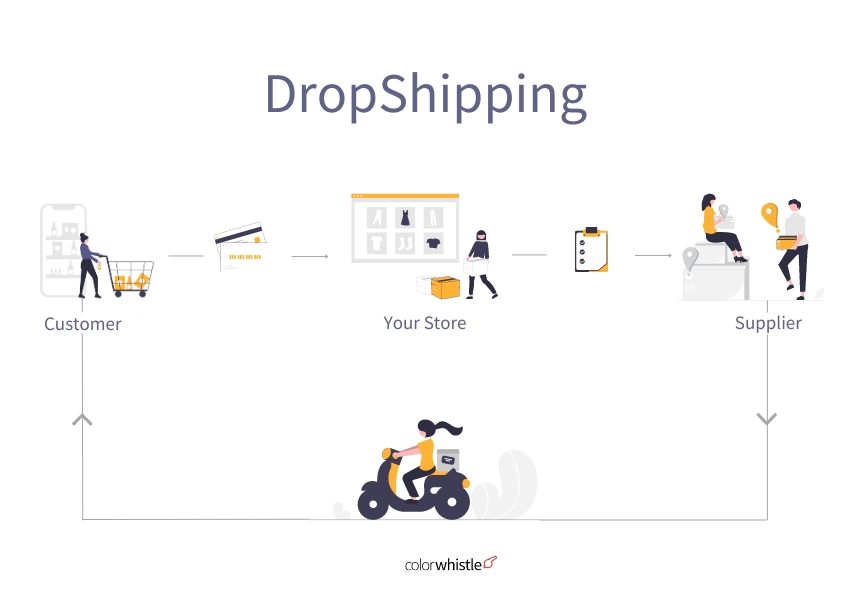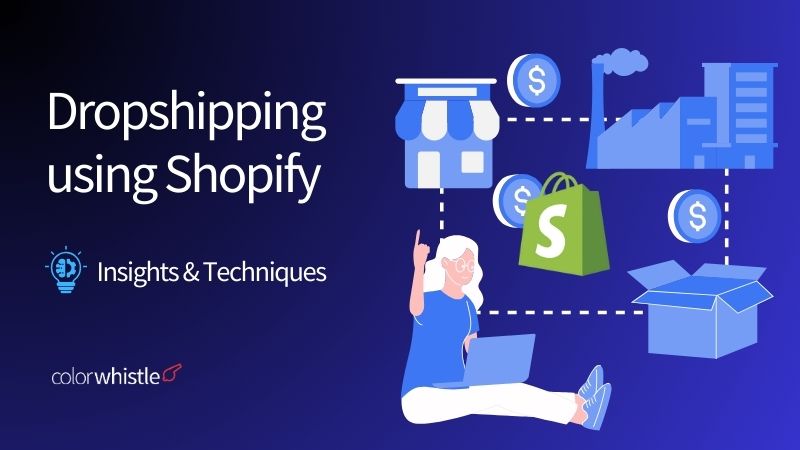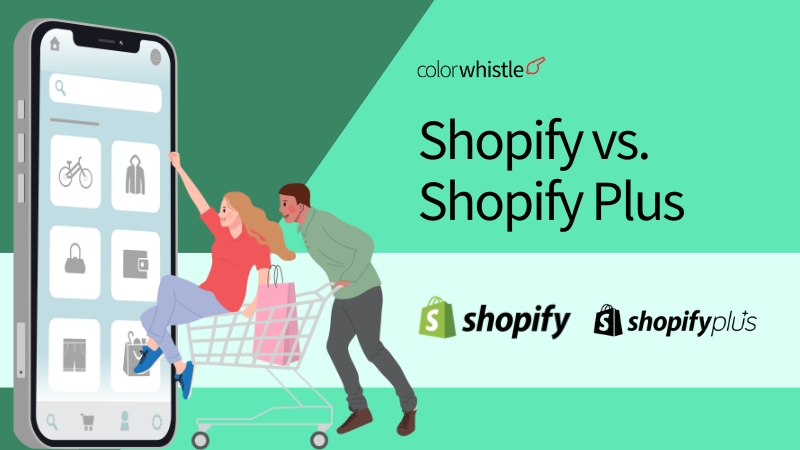Dropshipping helps entrepreneurs build and manage their online businesses. With Shopify’s platform, setting up a dropshipping operation is easier. In this comprehensive guide, we’ll explore dropshipping using Shopify, the benefits of this business model, and many useful tips for success.
For those looking to have a Shopify business established, connecting with a Shopify development company can help get the store ready. If an existing business requires maintenance, read our blog, Essential Shopify Store Maintenance Checklist for 2024, to know how to maintain the Shopify Store.
What is Dropshipping?
Dropshipping is a business model where a business owner avoids investing in and stocking the products they sell. Instead, they partner with a manufacturer or wholesaler of the products they wish to offer. When a customer places an order, the dropshipping business owner forwards it to the supplier, who then ships the product directly to the customer. As a result, the seller can manage the product without physically handling the stock.

Did You Know?
The global dropshipping industry is expected to grow, reaching over $550 billion by 2025.
Tips for Successful Dropshipping using Shopify
Select a Niche
Choose a niche with market demand. Research competitors to identify what can differentiate the business from others.
Focus on Customer Service
Excellent customer service can distinguish the business from competitors. Be responsive to customer inquiries and resolve any issues promptly.
Optimize for SEO
SEO enhances the visibility of the business on search engines. This includes using relevant keywords, creating high-quality content, and optimizing product pages.
Leverage Social Media
Use social media platforms to promote the products and engage with the audience. Run targeted ads to reach potential customers and drive traffic.
Monitoring the Analytics
Track the business’s performance using Shopify’s built-in analytics tools. This helps in understanding customer behavior and making informed decisions.
Build Brand Identity
Develop a unique logo, maintain a consistent color scheme, and establish a brand voice that resonates with the target audience.
Also Read
How to use Shopify for dropshipping?
Dropshipping using Shopify can be done in three main ways. Here’s a breakdown of each method to help determine the best option based on business needs:
1. Using dropshipping apps on Shopify
Starting a Shopify dropshipping business is made easy by using dropshipping apps. These apps connect the business with a network of suppliers, making order management straightforward. Here’s a quick guide on how to use these apps effectively:
- Create a Shopify store: Begin by creating a Shopify store and customizing it based on the chosen niche.
- Find and Import Products: Dropshipping apps assist in finding products and importing their details directly into the Shopify store. This saves time and ensures product listings are accurate and appealing.
- Streamline Order Management: Once an order is placed in the store, the app sends the order information to the supplier, who then handles packing and shipping to the customer.
- Monitor Deliveries: Many dropshipping apps include features for tracking delivery progress, helping dropshipping store owners provide better customer support by informing customers about their order status.
Popular dropshipping apps include DSers, Spocket, Modalyst, AutoDS, and Zendrop. These apps offer a range of features to simplify dropshipping operations.
Key Benefits
Quick Setup: Download and connect a dropshipping app to start selling quickly.
Automation: Automatically import products and send orders to suppliers.
Variety: Choose from various dropshipping apps and partner with multiple suppliers to offer a wide range of products.
2. Direct partnership with the supplier
Partnering directly with a supplier offers more control compared to using a dropshipping app. This method involves building relationships with suppliers and using Shopify to showcase and sell products. Finding a dropshipping supplier is crucial. When searching for suppliers, focus on specific needs. Delivery speed is key for customer satisfaction, so choose domestic suppliers near the customer base.
Key Benefits
Product Customization: Building relationships with suppliers can create opportunities for product customization.
Partnerships: As the store gains recognition, suppliers may approach directly to establish relationships, offering better negotiation terms.
Custom Agreements: Bespoke agreements allow for the negotiation of pricing and fulfillment terms.
Traditional dropshipping can lead to price competition, but print-on-demand and private label dropshipping let dropshipping store owners create unique, branded items like t-shirts, tote bags, and many more. This helps the store stand out and avoid direct competition while still enjoying the benefits of no-inventory dropshipping. Shopify App Store options for this are Printify, Printful, and Gooten.
Also Read
3. Using Shopify collection
Shopify Collective allows dropshipping businesses to expand their product range by partnering with other Shopify brands. Through Shopify Collective, it is possible to list and sell products from another Shopify dropshipping store, while the partner store fulfills the orders. Eligible merchants can download the Shopify Collective app and start connecting with potential partners from the Shopify admin. Businesses can browse supplier products to find new partners or invite existing partners to join the platform.
Key Benefits
Increase Sales: List complementary products to boost sales and attract new customers without the need to purchase stock.
Add More Products: Expand the product range without any inventory costs or risks.
Spot New Brands: Find and connect with new brands directly within Shopify.
Pros and Cons of Dropshipping
Pros
Cons
Low Costs: Requires minimal upfront investment as there is no need to purchase inventory.
Lower Profit Margins: Intense competition can result in lower profit margins.
Wide Selection of Products to Sell: Enables offering a variety of products without the burden of managing inventory.
Stock Issues: Sudden changes in product availability from suppliers can occur.
Flexible Location: Can be managed from anywhere with an internet connection.
Shipping Challenges: Order fulfillment can become complicated when working with multiple suppliers.
Easier to Start: Eliminates many retail challenges such as managing inventory and handling returns.
Supplier Errors: Mistakes made by suppliers are the responsibility of the business owner to resolve.
Easier to Scale: Allows for efficient scaling of the business without significant investment.
Dependence on Supplier: Relies heavily on suppliers for product quality and timely fulfillment.
Wrapping Up
Dropshipping with Shopify provides a low-risk, high-reward opportunity for entrepreneurs looking to start an online dropshipping business. With its user-friendly platform, an extensive app marketplace, and reliable customer support, Shopify makes it easy to build and grow the dropshipping store. This guide helps kickstart the entrepreneur journey and grow the business to new heights.
For those looking to develop a Shopify store, ColorWhistle has a dedicated Shopify development team. Feel free to contact us at +1 (919) 234-5140 our team is happy to guide you. Whether starting from scratch or enhancing an existing store, our experts can provide solutions to meet specific business needs.
What’s Next?
Now that you’ve had the chance to explore our blog, it’s time to take the next step and see what opportunities await!





